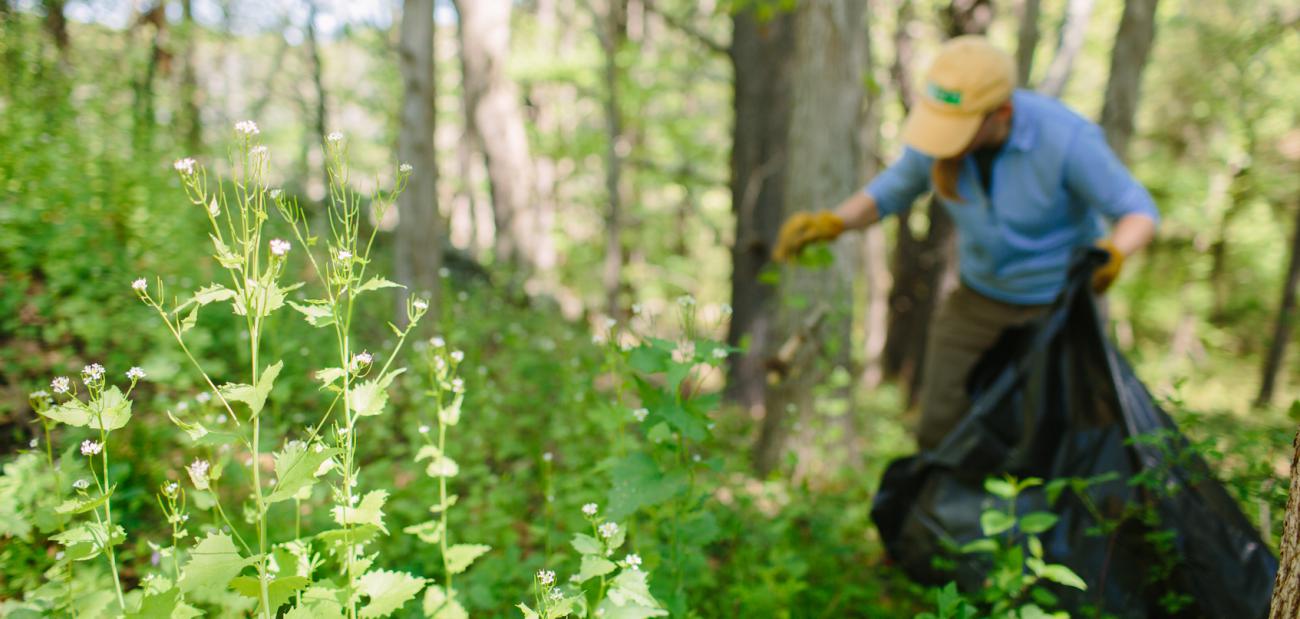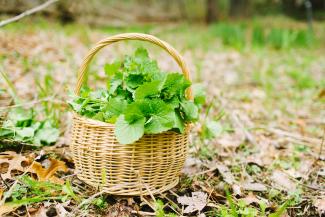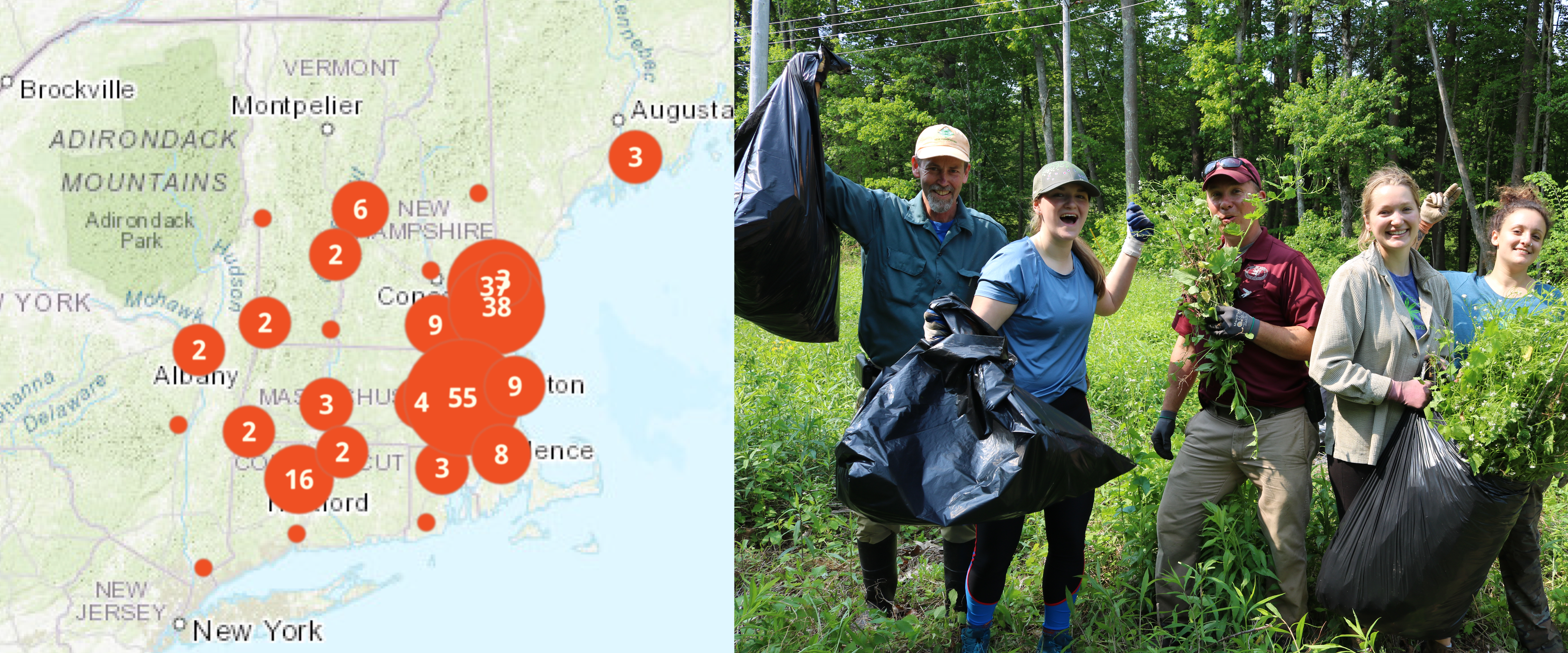The Garlic Mustard Challenge in New England
The Garlic Mustard Challenge in New England is a regional effort to restore natural ecosystems and prevent the further spread of garlic mustard (Allaria petiolata).
The Challenge is a fun way to encourage people to get out on the land and care for local natural areas in New England!
When?
Late April through early June, or whenever garlic mustard is in flower (but seeds are not yet set)
Where?
Look for garlic mustard in your yard or neighborhood throughout New England.
Who?
Anyone! Volunteer on your own or join a group pull:
Find a garlic mustard pull near you!
How?
Report the number of bags you pull below!
Not sure how to identify garlic mustard?
No problem - we've got resources to help.
Garlic Mustard really does smell like garlic! It grows over two years, flowering the second year and going to seed.
VIDEO: How to ID Garlic Mustard in Early Spring
VIDEO: How to Pull & Dispose of Garlic Mustard
What to do after you pull:
- Report the number of bags you pulled (scroll down to the form on this page)
- Make pesto!
VIDEO: Garlic Mustard Pesto Recipe
We're having a big impact! Explore the all the data.
Since 2014, THOUSANDS of people have helped pulled LOTS of garlic mustard. We have collectively removed over 1,000 33-gallon bags of garlic mustard in New England!
Explore the data


